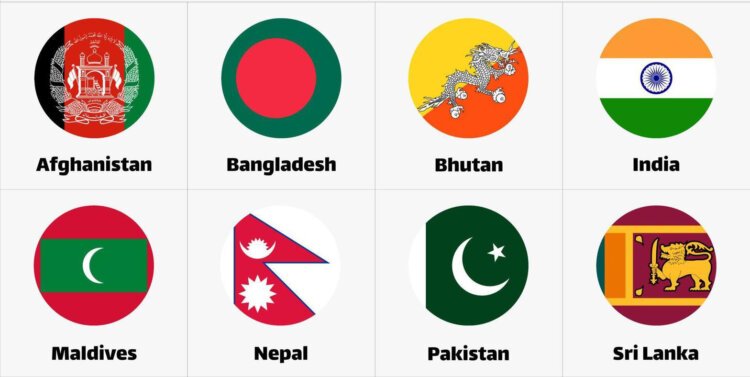WASHINGTON / ISLAMABAD — South Asia’s economic outlook is growing increasingly uncertain, with the World Bank warning that growth across the region is slowing due to mounting global and domestic challenges. In its newly released regional update titled Taxing Times, the World Bank projects that South Asia’s collective economic growth will decline to 5.8 percent in 2025, down from the earlier forecast of 6.2 percent issued last October. The report attributes the slowdown to a combination of subdued global demand, rising geopolitical tensions, and persistent fiscal weaknesses within the region.
Despite a modest projected recovery to 6.1 percent in 2026, the World Bank cautions that the outlook is precarious and subject to considerable risks. Many South Asian countries remain fiscally fragile after a series of economic shocks over the past decade, ranging from the COVID-19 pandemic to natural disasters and inflationary pressures. These compounded crises have left nations with limited policy space to respond to new challenges.
Martin Raiser, World Bank Vice President for South Asia, emphasized the urgent need for reforms to strengthen resilience and stimulate growth. “Multiple shocks over the past decade have left South Asian countries with limited buffers to withstand an increasingly challenging global environment,” Raiser said. “The region needs targeted reforms to strengthen economic resilience and unlock faster growth and job creation. Now is the time to open to trade, modernize agricultural sectors, and boost private sector dynamism.”
A central concern raised in the report is the region’s inability to generate sufficient domestic revenue, which the World Bank identifies as a key vulnerability. Although South Asian countries often impose relatively high tax rates compared to other developing regions, actual tax collection remains strikingly low. From 2019 to 2023, average government revenues in the region amounted to just 18 percent of GDP, significantly below the 24 percent average seen in other developing economies.
The report estimates that tax revenues in South Asia fall short by as much as 1 to 7 percentage points of GDP, even after accounting for large informal economies and dominant agricultural sectors. This gap is particularly stark in the areas of consumption taxes, corporate levies, and personal income taxes. Weak enforcement, complex tax codes, and widespread exemptions contribute to this shortfall, leading to high burdens on those who do pay taxes and leaving governments with insufficient resources to fund critical services.
Franziska Ohnsorge, Chief Economist for South Asia at the World Bank, warned that persistent low revenues could undermine fiscal stability and economic progress. “Low revenues are at the root of South Asia’s fiscal fragility and could threaten macroeconomic stability, especially in times of elevated uncertainty,” Ohnsorge said. “South Asian tax rates are relatively high, but collection is weak, leaving those who pay taxes with high burdens and governments with insufficient funds to improve basic services.”
To address this challenge, the World Bank recommends a broad overhaul of tax systems across the region. Measures include eliminating unnecessary exemptions, simplifying and unifying tax codes, improving enforcement, and leveraging digital technologies to identify and track taxpayers. The report also highlights the potential of innovative approaches such as pollution pricing, which could raise revenues while also addressing environmental concerns.
The report provides a country-specific breakdown, revealing a broadly downgraded regional outlook. Afghanistan’s economy, still heavily reliant on aid, grew an estimated 2.5 percent in FY24-25, lagging behind population growth, with only a slight moderation expected next year. Bangladesh is expected to grow just 3.3 percent in the current fiscal year due to ongoing political and financial pressures, while Bhutan’s growth forecast has been lowered to 6.6 percent due to weak agricultural performance.
India, the region’s largest economy, is projected to grow by 6.5 percent in FY24/25, with a slight dip to 6.3 percent in FY25/26 as global uncertainties offset domestic economic reforms. In Maldives, growth is forecast at 5.7 percent for 2025, supported by new infrastructure developments, although external debt remains a key concern.
Nepal’s outlook has been weakened by recent floods and systemic financial fragility, with growth forecasts downgraded to 4.5 percent this year. Pakistan, recovering from a string of economic and environmental crises, is expected to grow by 2.7 percent in FY24/25 and 3.1 percent in FY25/26, while Sri Lanka, buoyed by progress in debt restructuring, is set to grow by 3.5 percent in 2025 before moderating to 3.1 percent the following year.
The World Bank’s update offers a sobering assessment of South Asia’s near-term prospects but stresses that meaningful reforms—particularly in the area of domestic revenue mobilization—could lay the groundwork for greater resilience and more inclusive growth in the years ahead.



